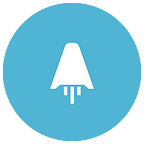History of mobile apps.
Once upon a time there were just application software and big, sturdy devices called cell phones. People were proud to have N-series mobiles of Nokia and the most beloved Symbian OS. We boasted of our office like tools inside a small yet heavy mobile device. Everyone was happy. All of this h“app”iness started in 2002.
Symbian as an OS went through a lot of developments like S60, UIQ and MOAP before it was acquired by the giant Nokia in June 2008. After the acquisition a non-profit organization called Symbian Foundation was established to nurture and develop Symbian into an even bigger phenomena. But things didn’t pan out as expected. There were hurdles and some principle issues which led to a different world for the customers.
In the year 1983, a man with a smile on his face and a bow tie in his shirt came back from a conference at Aspen themed- “The future is not what it used to be”. This young man-Steve Jobs- predicted the software distribution system “app store” and its success. All this he did a year before the “First Macintosh”, 24 years before first iPhone, 27 years before first iPad.
Apps have been around us longer than before we recognized them through the name. Apps emerged from early PDAs, through the addictively simple game Snake on the Nokia 6110 phone, to the first 500 apps in the Apple App Store when it made its debut in July 2008.
When it started we had licensed apps pre-installed in the devices. Later we moved on to a market where we buy and sell apps and advertisements based on our needs. This market grew to be one of the biggest ever.
The app era as we can call it has four notable periods:
- Symbian Period (The beginning of an Incredible era)
- iPhone Period (From ancient to modern)
- Google Phase of Apps(Marketing and reach to billions)
- Windows Phase(Joined the race huh!)
The Symbian period set the tone for app development and inspired millions to innovate on the same line. Symbian OS with its apps was a huge success and it made life a lot easier for businessmen.But it was just the beginning for the app revolution.
The concept of app store was created in 1993 through the advent of Electronic App wrapper — the First software distribution catalog. It had all the basic ideas of the current appstore with much less regulations and apps.
In 1998 ITIL-Information Technology Infrastructure Library introduced Palmix a web based app store to supply apps for Palm Pilots, Windows CE, and Psion EPOC handheld systems. These were “papas” to our smartphones.
With the rise in popularity came the competition, in 2002 Linspire — a Linux based apps store was launched which introduced 1 click installation for apps. All of these things, though famous were not up to the mark and were very primitive.
iPhone came in 2007 but without the app store or a legal place to download apps for the super-advanced mobile at that time. People started finding ways to jailbreak and install third party apps for the apple device. To curb this and to build on the potential for apps, Apple launched the iStore in 2008 along with iOS 2.0. This was a breakthrough move as people started downloading like crazy from the app store. This virtual market was and still is growing faster than any civilization did at any point of time in the planet. Apple introduced systems for third party developers to develop apps for iStore with strict conditions. The apps that passed through the stringent tests would be hosted in the store for a 30% commission in their revenue to Apple.
When you bought the phone the carrier dictated what you had on the phone. iPhone was the first phone where we said, you worry about the network we will worry about the phone.- Jobs
This is how apps came into being from the “pre-smartphonic” world. After istore’s inspiration Google came with Android and a tremendously simple Google app store in October 2008. Blackberry and Windows followed Google but they didn’t see a good start. The word “APP” was the word of the year in 2010 and the trend still continues. Everyone wants a piece of this humongous market; the market which owns the eyes. Advertisements, Data analytics, software development etc., grew at a rate more than ever expected through smartphone and apps.
After apps it is wearables. We talk a lot about smart watches and wearable technologies coming into the market; “Fitbit” was the first wearable launched in 2008- for tracking fitness levels. The wearable still has not reached deeper layers of population. Even the early adopters feel it is precocious.
Keeping history aside, what do you think will be the future of apps? Are they a big bubble waiting to burst or are they here to multiply and thrive till the end of times ? Please share with us in medium responses — your views on the future of apps.
